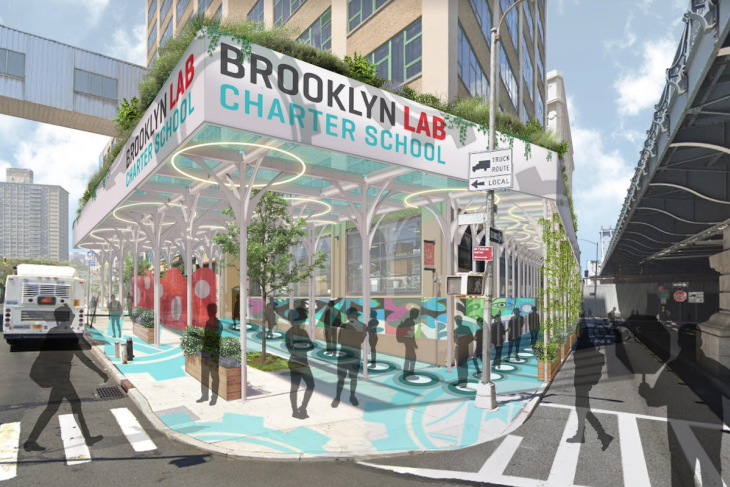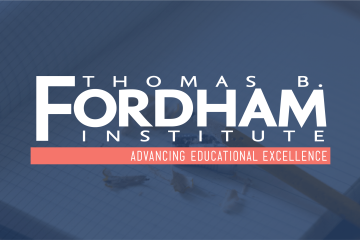As we prepare to reopen our schools, school administrators must examine our back-to-school rituals and upgrade plans for re-entry to account for the challenges presented by Covid-19. In particular, schools must create and clearly communicate the processes for school drop-off and arrival that support social distancing and wellness measures.
Like many New York City schools located in multistory buildings, Brooklyn Laboratory Charter Schools (LAB), located in downtown Brooklyn, has limited points of entry. Architects and planners predicted that, if spaced six feet apart, students could end up waiting in long lines for hours if all students arrived at the same time, causing congestion and health concerns.
The first effort to address these issues around school entry are included in LAB’s Back to School Facilities Tool Kit, which was prepared by five design firms and incorporates input from students, families, staff, and community members. Building on that tool kit, LAB, with support from Urban Projects Collaborative (a firm that manages project teams), engaged the architecture and urban design firms SITU and WXY to develop a “front porch”—an outdoor lobby that ensures safe entry and exit and helps integrate LAB’s education buildings into the greater community.
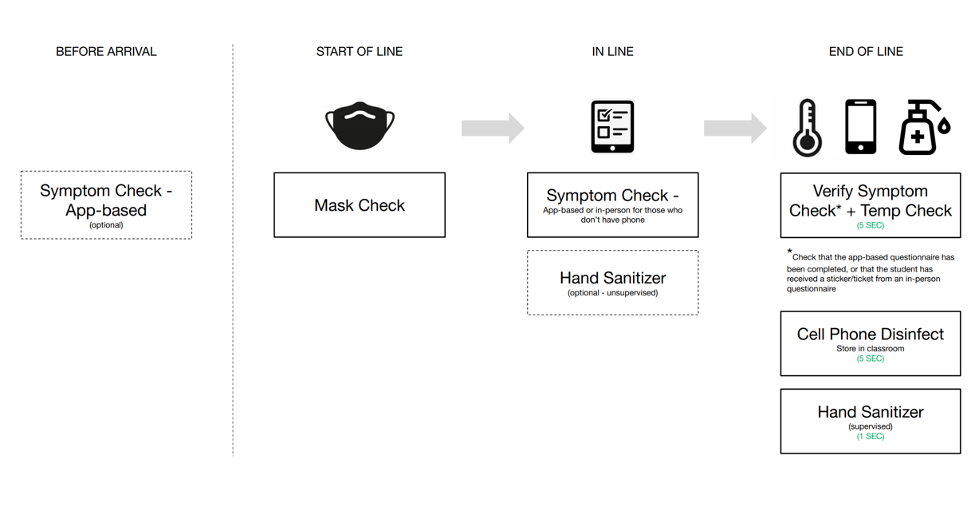
Image from WXY/SITU
LAB challenged the team to test the front porch concept over the main entrance to the school. The design implemented is based on an existing product developed by Urban Umbrella and an approval process that allows for expedited approval. Following ten days of final engineering, approval, and construction, LAB was able to hold a rehearsal of the queuing, wellness, and entry process.
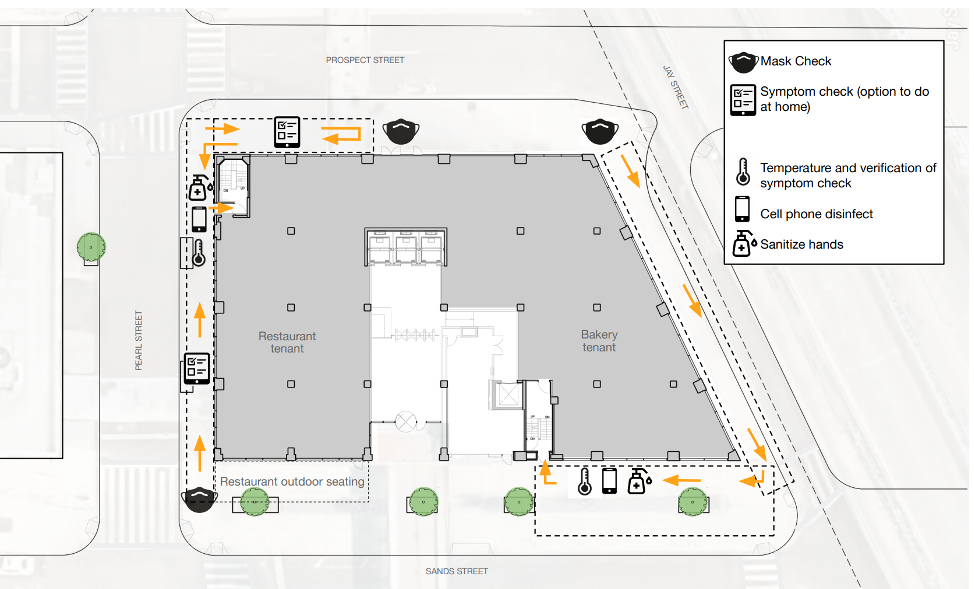
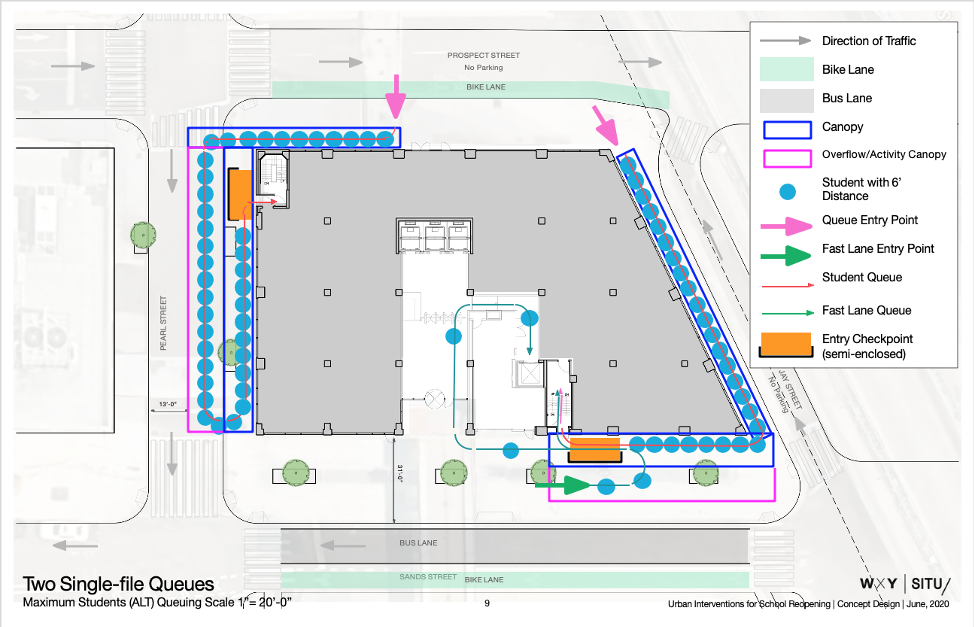
Image from WXY/SITU
We want to share what we learned about how to create safe and healthy arrival, entry, and departure routines. The following seven steps can help other schools design a student-centric and health-forward arrival and exit strategy.
1. Incorporate community feedback: Students, staff, and families understandably have myriad concerns and questions, but they also have knowledge that can inform the design of a workable re-entry process. Soliciting feedback from the school community and, to the extent possible, incorporating those ideas into reopening plans can build confidence and trust.
2. Chart socially distanced entry routines: The CDC recommends social distancing as a simple, yet effective way to reduce the spread of Covid-19. Schools should designate a single-direction pathway into the school that has clear markings indicating a safe, six-foot distance between individuals.
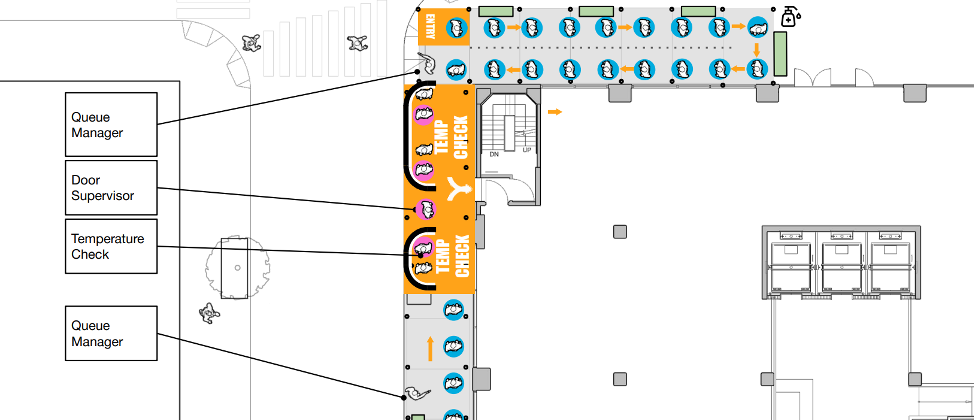
Image from WXY/SITU
3. Require masks and hand sanitization: Consistent with CDC guidance, cloth face coverings also help prevent the spread of Covid-19. Schools will need to ensure that every individual who enters the building is wearing a secured mask that covers both the mouth and nose. Schools should provide a mask to anyone who doesn’t have one. The CDC provides additional information about how to use and care for cloth face coverings. Before entering the building, all individuals are required to sanitize their hands and cell phones.
4. Conduct symptom and temperature checks: Checking each student’s wellness status based on the CDC symptom checklists and responding appropriately is important in mitigating community spread. Schools should also develop systems and protocols to handle fever or symptom incidents. Schools may want to utilize a questionnaire that all students and staff submit prior to school entry to confirm that they do not have Covid-19 symptoms and have not been exposed to the virus. Schools should plan to use a thermal scanner to ensure no one with a temperature of over 100 degrees Fahrenheit enters the building.
5. Provide shade and shelter: At LAB, we created our front porch to provide comfort and shelter during the new, longer entry process. Children (and adults) will be facing new rules and protocols that will be overwhelming. Beyond providing refuge from weather, a shelter for the school entry process can help everyone feel safe and cared for, encouraging compliance. Consider building a covering that can provide shade when it’s hot and protection from the cold, rain, or snow.
6. Organize staggered scheduling: The new health requirements result in longer entry and exiting processes to ensure social distancing. During the school day, social distancing may require more space in classrooms and hallways. To address these challenges, consider alternating days or staggering groups to reduce the number of students arriving, exiting, or inhabiting the school at any given time.
7. Increase points of entry: Schools, especially those fortified against gun violence, have restricted points of entry. If possible, use or create additional egress routes.
—
At LAB, we envision our front porch as a place to welcome the broader community into our school once the pandemic is under control. A lot of people in our schools and those in surrounding communities are feeling a sense of trepidation about schools reopening during the pandemic. As our schools begin to reopen, we need to remember that our community is getting us through this pandemic. We need to make changes that prioritize the health, safety, and comfort of our schools and communities so that we can continue to support teaching and learning.
